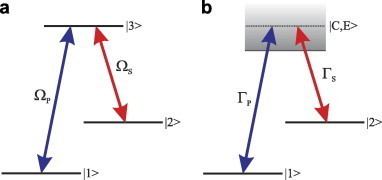 | ||
Similar Surface enhanced Raman spectroscopy, Transmission Raman spectroscopy, Spatially offset Raman spectroscopy | ||
The Stimulated Raman adiabatic passage (STIRAP) process permits transfer of a population between two applicable quantum states via at least two coherent electromagnetic (light) pulses. These light pulses drive the transitions of the three level Ʌ atom or multilevel system. The process is a form of state-to-state coherent control.
Population transfer in three level Ʌ atom
Consider the description of three level Ʌ atom having ground states
